Molecular Core Photos
To use this equipment, contact Dr. Grozdanov at molcore@ttuhsc.edu
or phone: +1 (806) 743-4624
 |
|
|
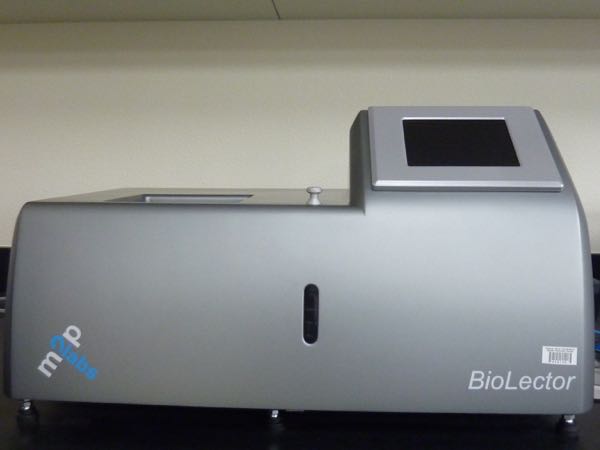 |
| The BioLector (M2P Labs) is a versatile instrument designed for growing bacteria, yeast, or mammalian cells in suspension using a 48-well plate. It continuously monitors several key factors, including cell growth (biomass), fluorescence, acid production (pH), and oxygen consumption. The system also fully controls and adjusts CO2, oxygen, humidity, and temperature, making it ideal for rapidly optimizing growth conditions and conducting cytotoxicity assays. Additionally, the Multitron II shaker (used offline) complements the BioLector by enabling parallel experiments, thus allowing you to maximize efficiency and free up time on the BioLector. For more information, please visit the company's website. |
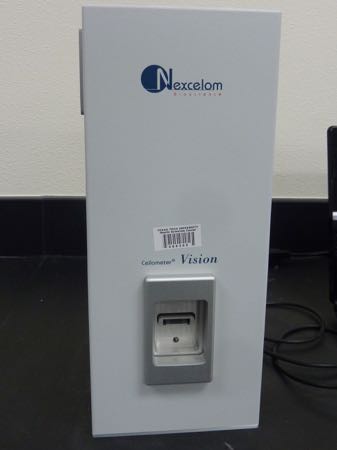 |
| The Cellometer Vision Image Cytometry (Nexcelom Bioscience) system is designed for straightforward image cytometry with just a 20 µl sample. It can perform a variety of analyses, including cell cycle analysis, apoptosis, autophagy, cell proliferation, mitochondrial membrane potential, viability assays, morphology analysis, and cell counting. The instrument can monitor fluorescence from a range of dyes and fluorochromes, including GFP, FITC, Acridine Orange (for DNA and RNA), RFP, PI, and PE, across green and red spectra. It captures high-quality images using an integrated digital camera and a 20x objective lens. For more details about the instrument, please visit the company's website. |
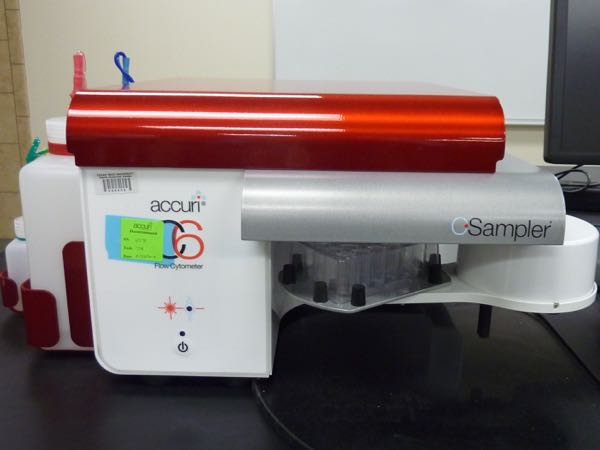 |
| The BD Accuri™ C6 Plus Personal Flow Cytometer is a compact and lightweight flow cytometer, measuring 11 x 14.75 x 16.5 inches and
weighing 30 lbs. It supports diverse applications, including immunology, cell and
cancer biology, plant and microbiology, and industrial uses. Despite its small size,
it offers powerful analysis capabilities with a blue and red laser and four fluorescence
detectors optimized for common fluorophores like FITC, PE, PerCP, and APC. It accommodates
12 x 75 mm sample tubes and microcentrifuge tubes and can automate data collection
from 48- and 96-well plates. The C6 Plus is ideal for studying various cellular functions,
such as apoptosis, cell cycle, cell proliferation, mitochondrial membrane potential,
immunoassays, cell phenotyping, cytosolic calcium and pH, and nitric oxide. For more
information, visit the company's website. |
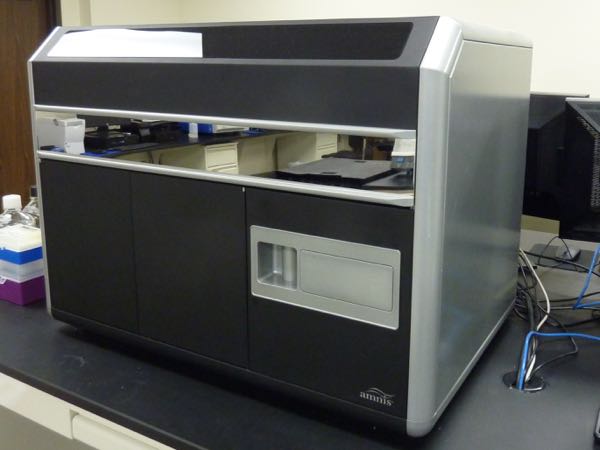 |
| The ImageStream Mark II combines the rapid, statistical power of flow cytometry with the detailed insights
of high-resolution microscopy. It offers high-resolution imaging in flow with 20x,
40x, and 60x objectives, four lasers (405 nm, 488 nm, 561 nm, 642 nm, 785 nm), and
12 imaging channels. Dual CCD cameras serve as detectors, allowing evaluation of various
fluorochromes in non-adherent cells, whether alive or fixed. For more information,
visit the company's website. |
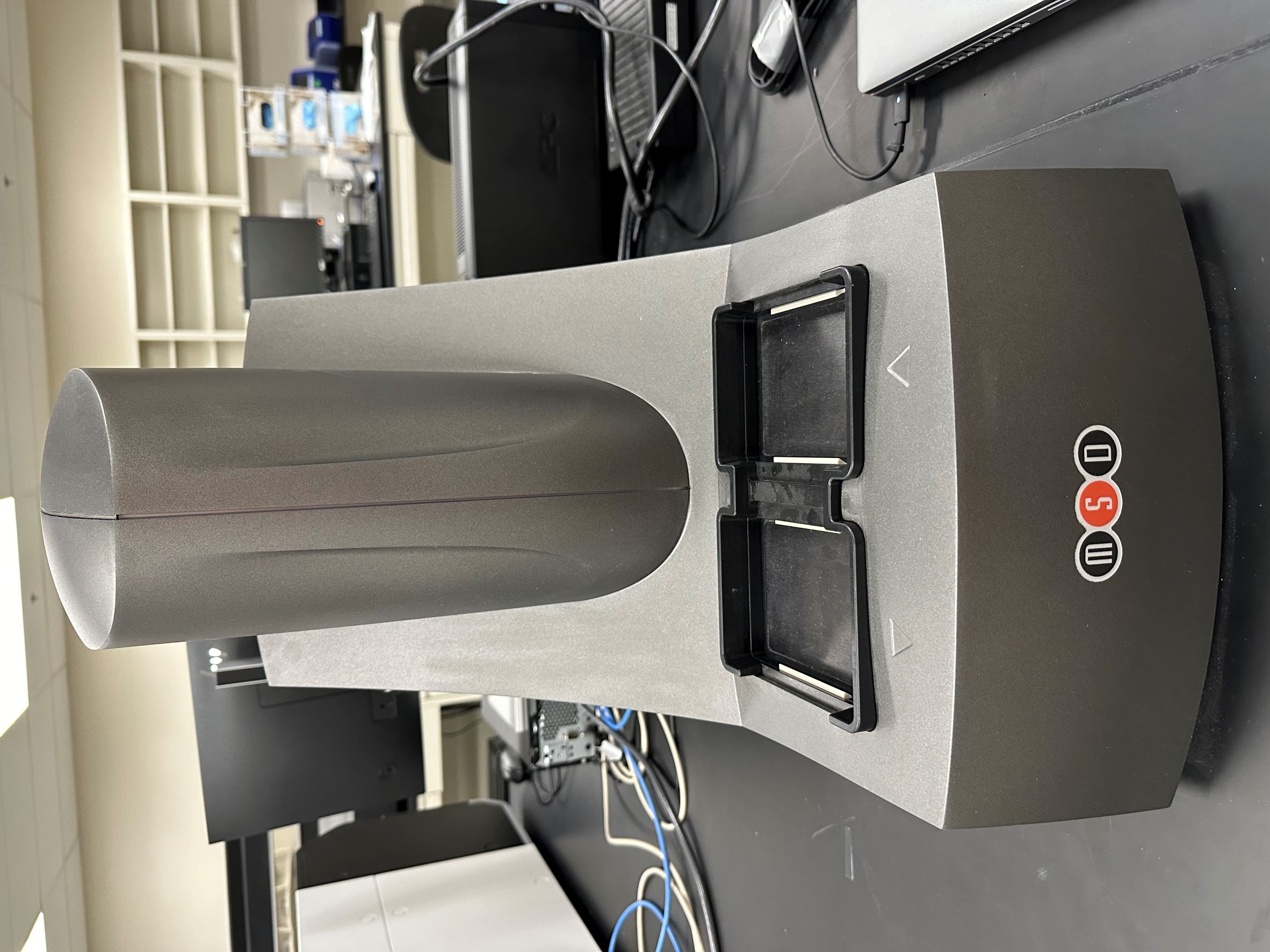 |
| The MESO QuickPlex® SQ 120MM is a versatile and compact system known for its reliability and ease of use. It performs
multiple tests on a single sample quickly, increasing productivity and saving sample
volume. This instrument supports 96- and 384-well formats and can detect biomarkers
in single or multiplex formats. It uses specialized kits for profiling various biomarkers
and diseases, including cancer, cardiovascular issues, and neurodegenerative disorders.
Equipped with an ultra-low noise CCD camera, it offers high sensitivity, a broad dynamic
range, and fast read times. For more information, visit the company's website. |
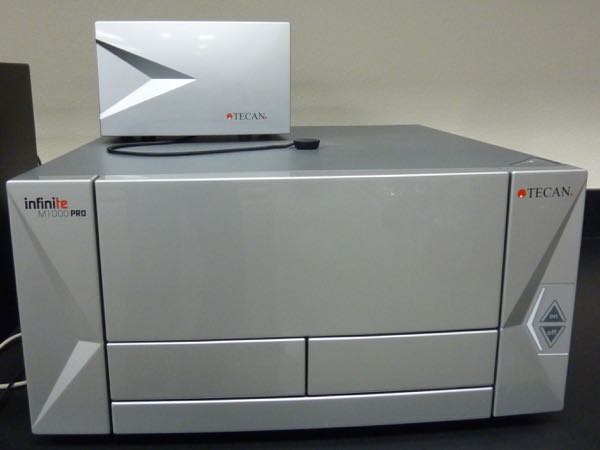 |
| The Infinite M1000 PRO Quadruple Monochromator Microplate Reader (Tecan) is an advanced microplate reader designed for a range of applications, including UV, VIS absorption, fluorescence intensity, and fluorescence polarization. It also supports time-resolved fluorescence, fluorescence resonance energy transfer (FRET), and AlphaScreen technology. The reader can quantify luminescence and analyze luminescence spectra. It features temperature control (up to 42°C) and can shake plates both orbitally and linearly. The system accommodates various plate formats, including 6-, 12-, 24-, 48-, 96-, 384-, and 1536-well plates, and provides high spectral resolution at 1 nm. |
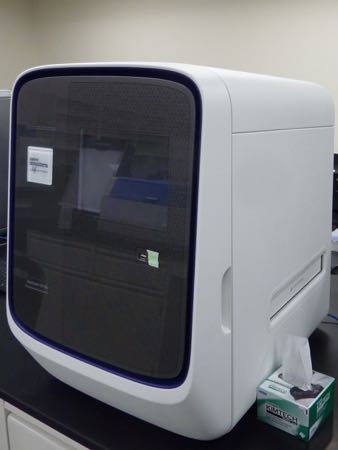 |
| The QuantStudio 12K Flex Real-Time PCR System (Life Technologies) is designed for gene expression analysis, microRNA profiling, and non-coding RNA analysis. It supports both TaqMan and SYBR Green assays and can handle real-time PCR in 96- and 384-well plate formats, as well as TaqMan Low Density Array cards. For more information, click here. |
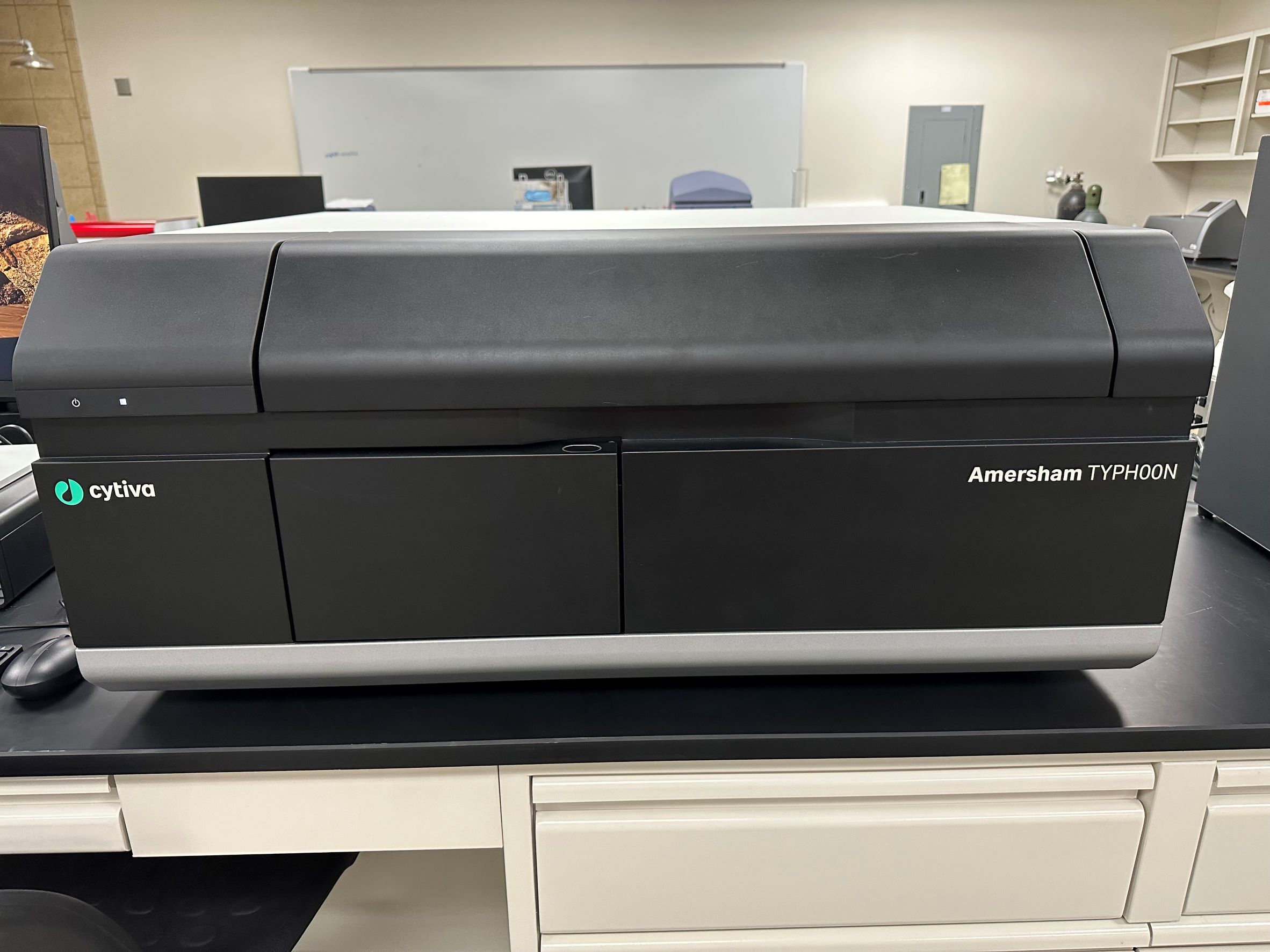 |
| The Typhoon 5 Biomolecular Imager is a versatile imaging system designed for sensitive and quantitative analysis of gels and blots. It excels in phosphoimaging and near-infrared imaging, with capabilities for 700 and 800 nm wavelengths, making it suitable for Western blots with appropriate antibodies. The system features advanced optics for detecting a wide range of fluorescent and chemiluminescent signals. It supports multiple imaging modes, including fluorescent, chemiluminescent, and colorimetric, with customizable resolution settings. For more details, please visit the manufacturer's website. |

